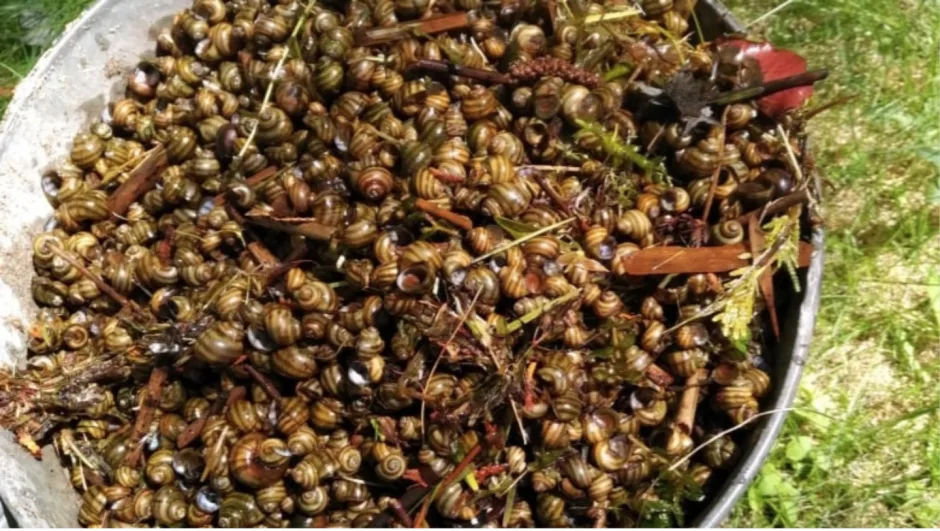
Ontario’s massive snail die-off is unheard of, could affect ecosystem
A mollusk expert says the recent discovery of more than 150 kilograms of dead Banded Mystery Snails on a Haliburton, Ont., lake — the weight of an adult male reindeer — raises concerns about the impact of the invasive species on the ecosystem.
During the spring, several people reported finding the same species of dead snails, each about 2.5 centimetres in diameter, in waterways and along shorelines in Ontario and Quebec.
None of those discoveries were as large as what Catherine MacRae found on the May long weekend when she went to take her kayak out on Grass Lake.

Catherine MacRae used buckets to collect dead Banded Mystery Snails to clean up the shoreline along Grass Lake in Haliburton, Ont. (Catherine MacRae via CBC)
SEE ALSO: How to control a LDD moth outbreak
"The lake was coated. And when I say coated, they were within an inch of each other and half way out into the lake," said MacRae, who has lived on the lake for 20 years.
"It was total snails."
MacRae says she has seen Banded Mystery Snails, first discovered in Canada in the 1860s, over the past few years, but not to this extent.
She spent 10 days collecting them in buckets to help clear up access to the lake from her property, and to get rid of the "putrid" smell.
"I was concerned that by allowing all those snails to rot on the shoreline, I was creating a toxic soup I wouldn't want to swim in," she said.

MacRae says she collected more than 150 kilograms' worth of snails from her shoreline over two weeks. (Catherine MacRae via CBC)
CAUSE OF DEATHS UNKNOWN
Environmental scientists can't confirm why the snails have died off in such large numbers, but suggest the hot weather in May and low water levels were partly to blame.
MacRae sent her photos of the shells to Andre Martel, a researcher with the Canadian Museum of Nature, and one of the country's leading mollusk experts. He says he's never seen a die-off to this extent.
"We know that they die after reproduction, sometimes massively, but to that scale is unheard of," said Martel.

Environmental scientists say the Banded Mystery Snail die-offs may have been caused by a May heat wave combined with low water levels. (Catherine MacRae via CBC)
Martel suspects the population of this species of snail has increased over the past 10 to 20 years, which has made their regular die-off period after spring reproduction more noticeable.
He's concerned about how these deaths could affect the ecosystems.
"There's no doubt that when you have millions of a species that are not supposed to be there, clearly the native species are going to take a certain impact, there's no doubt about it," he said.
Martel says more research is needed before the full impact can be determined, which could take years.
This article, written by Celeste Decaire, was originally published for CBC News.